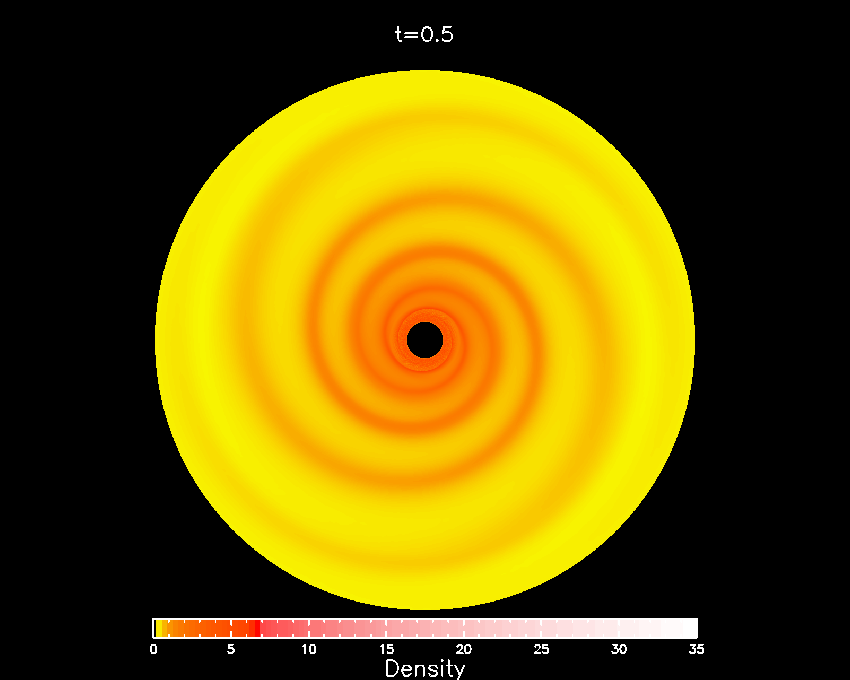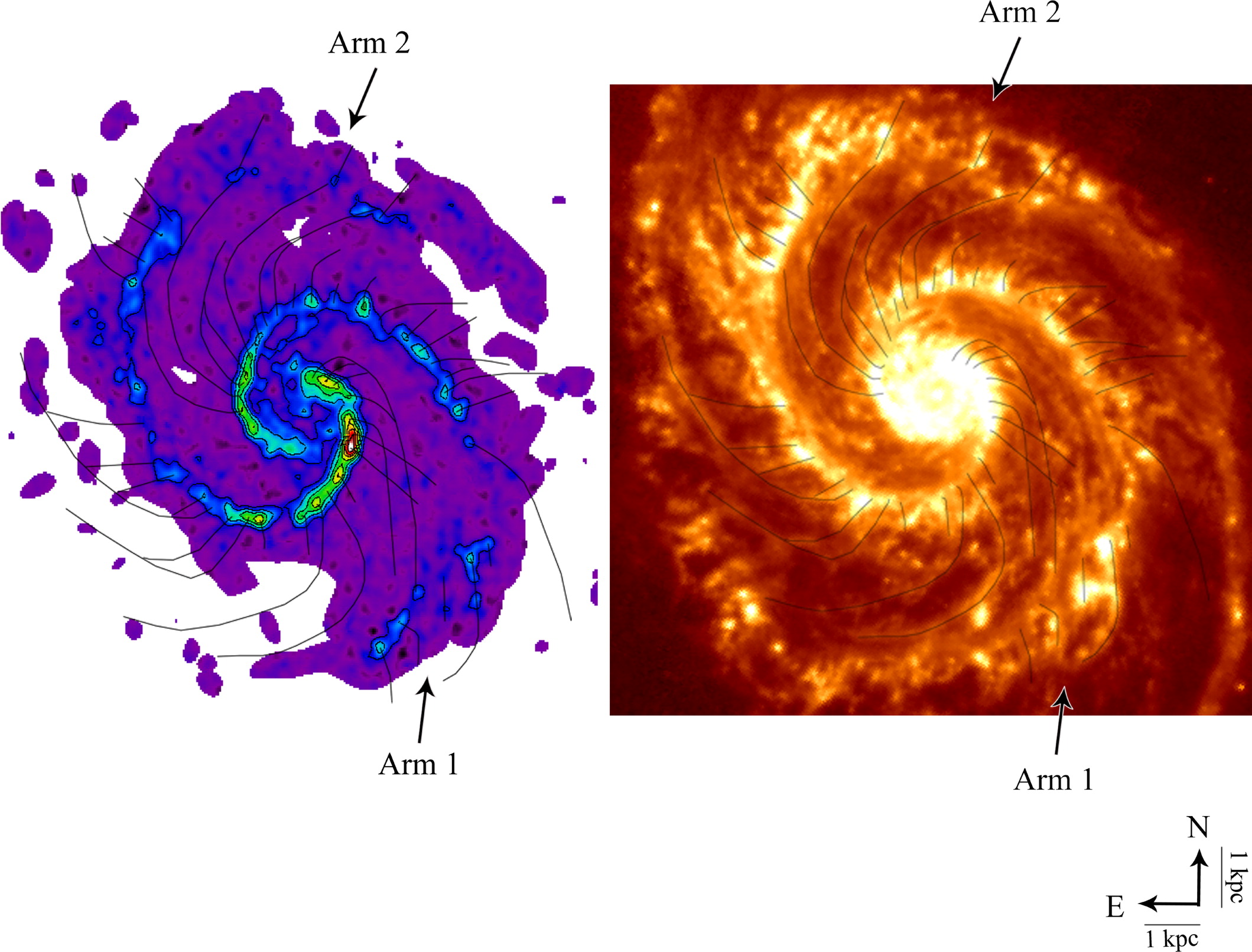Formation and Fragmentation of Gaseous Spurs in Spiral Galaxies
|
Grand design spiral galaxies are named for the majestic
twin-armed
spiral patterns that swirl outward from the galactic centers. In
optical
images, these bright arms are often seen to be dotted at
regular intervals with luminous star-forming regions. In
radio-frequency images, arms are seen to be abundant in cold, dense,
molecular gas -- the raw material from which these new stars are
created.
|

M51 (NGC 5194), the
Whirpool galaxy (courtesty of S. Vogel)
|
 Spiral arms and spurs
in M51: red patches are star-forming regions; spurs are dark "dust
lanes"
Spiral arms and spurs
in M51: red patches are star-forming regions; spurs are dark "dust
lanes" |
When observed at very high resolution, the morphology of spiral
galaxies becomes more complex. From each primary
spiral arm, a series of smaller structures emerges, sweeping outward
and backward into the interarm region. These substructures are seen
as dark dust lanes overlying the bright background in optical images,
as long filaments in infrared images that trace emission
from the dust, and as extensions from the densest large-scale
molecular gas concentrations in millimeter-wavelength radio images.
These substructures are referred to as spiral-arm "spurs" or
"feathers".
In some cases, star-forming clusters are also dotted along the spurs. |
M51 at high resolution
in molecular (left) and dust (right) emission, with spur loci
marked
(image
from
La Vigne, Vogel, and Ostriker 2006)
Theoretical models have identified the dynamical processes
that lead
to the formation of these spurs, and make it possible to see spur
formation in action. These studies have also revealed more details of
the series of steps that transforms diffuse gas into dense gas, and
subsequently into stars. It is the collapse and fragmentation of dense
gas clouds that ultimately creates the luminous clusters of young
stars that we see.

Spur formation in global
model of a spiral
galaxy. From Shetty and Ostriker (2006).
|
The first step in the
process is the flow of diffuse gas from
interarm regions
into spiral arms. Because gas is flowing supersonically
relative to the arm pattern (which itself spins about the galactic
center), it shocks when it encounters the arm. This shock drives up
the density of the gas, which enhances the abundance of molecules
(formed when atoms that have stuck to grain surfaces encounter each
other). At the high densities present within arms, gravity is
stronger, and this gravity begins to cause the gas to concentrate
locally -- leaving rarefied regions in between the growing
condensations.
|

Schematic of gas flowing across a spiral arm.
(Kim & Ostriker 2002)
|
If the shock is strong, gas condensations grow very
rapidly. Some molecular gas condensations, containing up to ten million
times the
mass of the Sun, collapse all the way to make gravitationally bound
clouds in the arm. Embedded star clusters form within these giant
molecular clouds.
Snapshot from global model, after gas
has collapsed into giant clouds in the spiral arms (Shetty &
Ostriker 2006)

| Other overdensities do not
grow as rapidly, but the gas is
still concentrated when it emerges downstream from (outside of) the
spiral arm. Since shear is stronger in interarm regions than arm
regions, the concentrations get stretched into spurs with a
``backswept'' morphology. At the enhanced densities within spurs,
condensations can continue to grow, and this sometimes leads to
formation
of star clusters in the interarm regions. |
Snapshots of a spiral arm
segment at successive stages of spur formation and fragmentation
(Kim & Ostriker 2002)

|
| Only a small fraction
(typically 5%) of the gas in giant molecular
clouds is transformed into stars; the
remaining is dispersed by the energy input from young stars. With the
conversion of dense gas to the diffuse phase in interarm regions, the
cycle
returns to its starting point -- poised for the next encounter with a
spiral arm. |
Simulation including
feedback from star formation, which disperses gas that has become
concentrated by gravity (Shetty
& Ostriker 2008) 
|
For more information, see:
Our
publications
Return to Eve
Ostriker's Research Page
Return to Eve
Ostriker's
Home Page
This material is based upon work
supported by the National Science
Foundation (NSF). Any opinions, findings,
conclusions, or recommendations expressed here are those of
the author(s) and do not necessarily reflect the views of the NSF.







